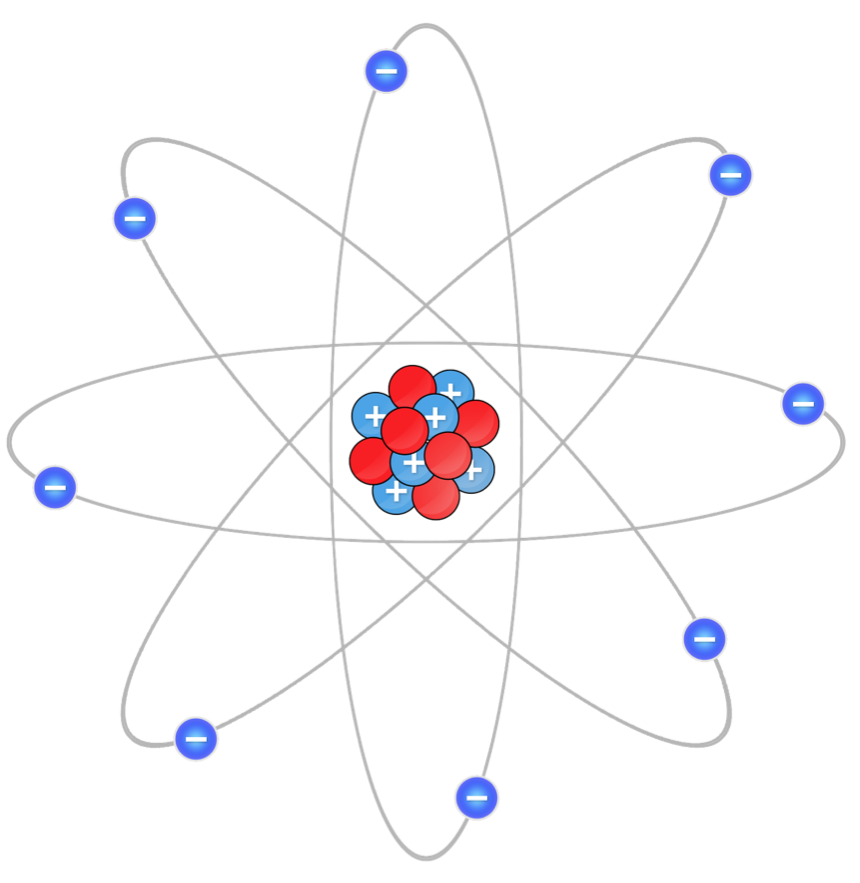An atom with is an example of a many-electron system.

The electron configuration of a multi-electron atom, e.g. carbon: 1s22s22p2, specifies a general distribution of electrons in the atom’s orbitals. It is slightly vague in terms of energy levels, as different states may arise from a given electron configuration. In the case of carbon, the two 2p electrons could reside in any of the three 2p orbitals, with any spin orientation combinations that do not violate the Pauli Exclusion Principle. For example, the electrons in 2p can be arranged as ,
,
, etc.
To evaluate the relative non-relativistic energy levels of these different states for carbon, let’s assume the following:
- The core electrons of 1s22s2 do not affect the relative energy levels. This is because there is only one way to arrange these electrons, with the same arrangement common to all the different states. Consequently, the electronic configuration of carbon is effectively reduced to p2.
- The coupling of orbital angular momenta of the p2 electrons occurs separately from the coupling of spin angular momenta of the electrons, where
and
.
- The states
are represented by total wavefunctions that are antisymmetric with respect to electron label exchange.
The non-relativistic multi-electron Hamiltonian of eq240 is constructed without considering orbital angular momentum coupling and spin angular momentum coupling. To satisfy our second assumption, we modify
as follows:
The extra term is a correction to the energy levels of states due to angular momentum coupling. The correction for spin-spin interactions, however, does not require an additional term, as it is accounted for in the last term (will be explained shortly).

Question
How is the new term derived?
Answer
Orbital angular momentum coupling is the interaction of the orbital magnetic moments of a pair of electrons. The interaction creates a potential in the form of eq67, where
where ,
is the angular momentum of one electron and
is the magnetic field due to the orbital motion of the other electron.
Since (see article on Biot-Savart law),
, where
is the constant of proportionality. For a system of more than two electrons,
.
Rewriting in terms of eq50 and eq51,
For the p2 configuration, which involves equivalent electrons, . So,
where the constant .
Comparing the second and third terms of with eq181,
. Therefore,
For a given electron configuration like p2, the values of do not change. Therefore, the relative energies of states arising from an electron configuration are determined by the second and third terms of
. This reduces
to
We know from eq244 that and hence
, which results in our ability to choose a common set of eigenstates for
and
. Since the eigenvalue of
is a function of the total orbital angular momentum quantum number
,
is a function of
.

Question
Show that for a two-electron system.
Answer
Using eq181, eq99, eq100, eq101, the identities and
, and that the component operators of
and
commute because they act on different vector spaces, we have
.
Lastly, two factors contribute to of the term
. The first, called Coulomb interaction, can be explained by classical mechanics, where two electrons orbiting in the same direction meet less often than when they are orbiting in opposite directions. This implies that
. Furthermore, the individual angular momentum of each electron orbiting in the same direction adds vectorially to give a higher total angular momentum (and hence a higher value of the quantum number
) than electrons orbiting in opposite directions. Hence, the Coulomb contribution to
is dependent on the quantum number
. The second factor affecting
is the exchange interaction. As mentioned in an earlier article, the exchange interaction is due to the symmetry of the total wavefunction of the state
. We can infer from eq247 that
for total wavefunctions with anti-symmetric spin wavefunctions are greater than
for total wavefunctions with symmetric spin wavefunctions. Hence,
is dependent on the total spin angular momentum quantum number
.
This above analysis of energy levels of different states (with respect to ) can be extended to any electron configuration of equivalent electrons. In short, for a given electron configuration with equivalent electrons, states with the same value of
and the same value of
have the same energy.

Question
How about a particular electron configuration of non-equivalent electrons, where ?
Answer
The concept of states with the same value of and the same value of
having the same energy also applies, to reasonable estimation, to a given electron configuration of non-equivalent electrons because the eigenvalues of
is relatively small compared to the eigenvalues of the other terms in
. In fact,
is usually omitted in the Hamiltonian, whether we are dealing with equivalent or non-equivalent electrons. The eigenvalue of the term
in
is associated with orbit-orbit coupling energy. If
is relatively small compared to the eigenvalues of the other terms in
,
and
.
In summary, we have shown that different states that arise from a particular electron configuration have the same energy if they have the same value of and the same value of
. However, we have not discussed the complete solution to
, which involves deriving the exact formula of total wavefunctions of
and the exact eigenvalues of
. The solution to
can be found using the Hartree-Fock method, which will be explained in another article.